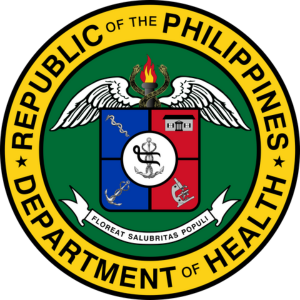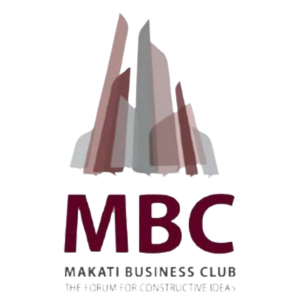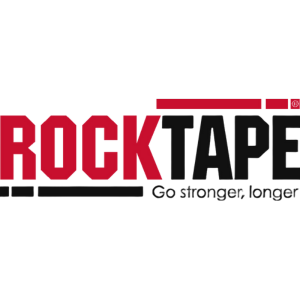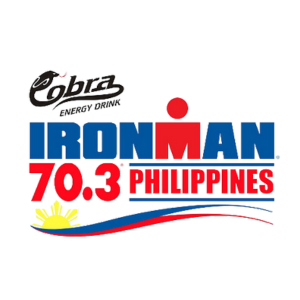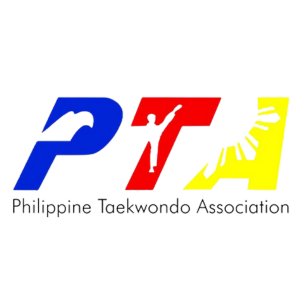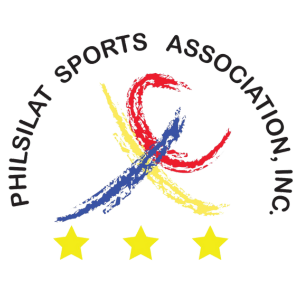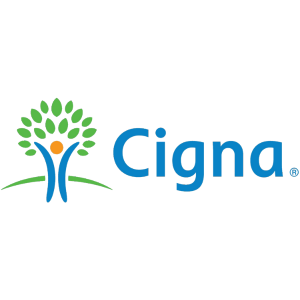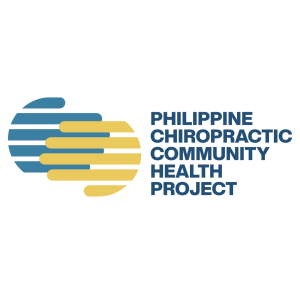What is your chief complaint?


Are you Suffering from Pain?
Intercare can make a difference – a difference in terms not only of alleviating your immediate pain, but a difference in your overall quality of life.
A significant percentage of all headaches arise from problems in the neck and are classified as “cervicogenic headache”. The most common trigger for a cervicogenic headache is limited movement of the joints in your upper cervical spine. Normally, each of the joints in your neck move freely and independently. Sometimes, restrictions in the upper cervical spine initiate a painful cycle of stiffness, muscle tightness and joint inflammation. This may cause irritation to the sensitive nerves leading from your neck into the back of your head.
Symptoms:
Cervicogenic headaches are most commonly one-sided, but occasionally may be present on both sides of the head. Pain often radiates from the base of your skull toward the top of your head and sometimes over your eyes. Headache episodes may last from hours to days. The pain is continuous but fluctuating and is often described as “deep”. You may also notice chronic neck tenderness and stiffness.
How Can We Help?
Getting you back to normal as soon as possible is our number one goal. To do that, we will likely recommend one or more of the following:
- Chiropractic Care to gently restore movement to your neck.
- Therapy modalities to ease your muscle tightness, pain and swelling.
- Myofascial release to remove your long standing tightness.
- Therapeutic stretching to restore your flexibility.
TMD is a term used to describe a group of problems that cause pain in the temporal mandibular joint in your jaw. These problems can arise from the muscles around the joint, the disc within the joint or the bony portion of the joint itself. Imbalances between the muscles that open and close your jaw are the most common culprit. TMD is more common in people who clench their jaw or grind their teeth, especially at night. Bad posture and emotional stress are contributors to this problem. You are three times more likely to suffer with TMD if you have been involved in a “whiplash” accident.
Symptoms:
Typical symptoms of TMD include: jaw clicking, limited mouth opening, possible jaw locking, and pain. Chewing and eating usually make your symptoms more noticeable. TMD pain is generally described as an “ache” located in front of your ear canal but may also spread to other areas of your face, head, neck and shoulders. TMD is most common in people who clench their jaw or grind their teeth.
How Can We Help?
Conservative treatments, like those provided by our clinic, have been shown to be s effective as any surgery for most patients with TMD. Getting you back to normal as soon as possible is our number one goal. We will likely recommend one or more of the following:
- Chiropractic Care to gently restore movement to your jaw.
- Therapy modalities to ease your muscle tightness, pain and swelling.
- Myofascial release to remove your long standing tightness.
- Therapeutic stretching to increase tissue flexibility and ease pain.
Your neck is made up of seven bones stacked on top of each other with a soft “disc” between each segment to allow for flexibility. Normally, each joint in your neck should move freely and independently. If one or more of the joints in your neck is slightly misaligned and restricted, we call this condition “cervical segmental joint restriction”. Joint restrictions can develop in many ways. Sometimes they are brought on by an accident or an injury. Other times, they develop from repetitive strains or poor posture.
Symptoms:
Joint restrictions most commonly cause local tenderness and discomfort. You may notice that your range of motion is limited. Movement may increase your discomfort. Pain from a restricted joint often trickles around your shoulders and upper back.
How Can We Help?
Getting you back to normal as soon as possible is our number one goal. To do that, we will likely recommend one or more of the following:
- Chiropractic Care to gently restore movement to your neck.
- Therapy modalities to ease your muscle tightness, pain and swelling.
- Myofascial release to remove your long standing tightness.
- Therapeutic stretching to restore your flexibility.
- Class 4 Medical Lasers to reduce pain and improve nerve regeneration function.
The term “Rotator Cuff” describes a group of four small muscles that hold your shoulder in its shallow socket while larger muscles move it. Strains and injuries to the rotator cuff are the most common cause of shoulder problems, accounting for 4.5 million doctor visits per year. Less than 10% of rotator cuff tear are the result of an acute injury like falling, pushing, pulling, throwing, or lifting. The vast majority of injuries are the result of repeated strains or “impingement”. Rotator cuff impingement means the area where your rotator cuff tendon lives has become too crowded and the rotator cuff is pinched each time you raise your arm.
Symptoms:
Most chronic strains begin silently with symptoms becoming more evident as the tear progresses. Pain is often localized to the front and outside of your shoulder but can sometimes radiate down your arm and can often be worse at night. Patients who have suffered an acute rotator cuff injury often report a “tearing” or “snapping” sensation accompanied by severe pain and weakness.
How Can We Help?
Getting you back to normal as soon as possible is our number one goal. To do that, we will likely recommend one or more of the following:
- Therapy modalities to decrease your pain, limit inflammation and ease muscle spasm.
- Myofascial release to release your long-standing tightness and soft-tissue adhesions.
- Therapeutic stretching to restore your flexibility.
- Class 4 Medical Lasers to reduce pain and improve nerve regeneration function.
Elbow pain is commonly caused by overuse from activities like sports, hobbies, or jobs that involve repetitive arm movements. It can also result from underlying medical conditions such as arthritis.
Symptoms:
Symptoms of elbow pain can include tenderness, swelling, and difficulty moving the arm, especially during bending or lifting. You may also experience sharp pain, stiffness, or a weakened grip.
How Can We Help?
Getting you back to normal as soon as possible is our number one goal. To do that, we will likely recommend one or more of the following:
- Chiropractic care to gently restore motion to any “restricted” joints in your elbow.
- Therapy Modalities to decrease your pain and limit inflammation.
- Class 4 Medical Laser to reduce pain and improve nerve regeneration function.
The eight bones of your wrist form a U-shaped channel that houses several tendons and your median nerve. This channel is called the Carpal Tunnel. Your median nerve is responsible for sensation on the palp side of your 3 1/2 fingers. Compression or irritation of this nerve as it travels through the carpal tunnel causes the condition known as “Carpal Tunnel Syndrome”. Carpal Tunnel Syndrome can be brought on by prolonged wrist flexion and/or repetitive wrist movements like supermarket scanning, keyboard use, carpentry or assembly line work. Carpal tunnel syndrome is more common in your dominant hand and sometimes affects both hands.
Symptoms:
Symptoms of Carpal Tunnel Syndrome include numbness, tingling or discomfort on the palm side of your thumb, index, middle finger and half of your ring finger. The discomfort can sometimes extend towards your elbow. Symptoms usually begin as nighttime discomfort or waking up with numb hands but can progress to a constant annoyance.
How Can We Help?
Getting you back to normal as soon as possible is our number one goal. To do that, we will likely recommend one or more of the following:
- Chiropractic Care to gently restore motion to any “restricted” joints in your hands.
- Therapy modalities to decrease your pain and limit inflammation.
- Myofascial release to release muscle tightness and soft-tissue adhesions.
- Therapeutic stretching to restore your flexibility and ease pain.
- Class 4 Medical Lasers to reduce pain and improve nerve regeneration function.
Your spine consists of 24 individual vertebrae stacked on top of each other. Flexible cushions called “discs” live between each set of vertebrae. The term lumbar disc lesion means that your disc has been damaged. Disc lesions start when the outer fibers of the disc become strained or frayed. If enough fibers become frayed, this can create a weakness and when the disc is compressed, the outer fibers may “bulge” or “protrude” like a weak spot on an inner tube. If more fibers are damaged, the jelly within the disc may “herniate” outward. Most lumbar disc problems occur at one of the two lowest discs L5 or L4. Smokers and people who are generally inactive have a higher risk of lumbar disc problems.
Symptoms:
Since the spinal cord and nerve roots live directly behind the disc, bulges that are accompanied by inflammation will likely create lower back pain that radiates into the buttock or the entire lower extremity. If the disc bulge is significant enough to create a mechanical compression of your nerve, you may also experience loss of your reflexes and weakness.
How Can We Help?
Getting you back to normal as soon as possible is our number one goal. To do that, we will likely recommend one or more of the following:
- Chiropractic Care to gently restore movement to your spine.
- Therapy modalities to ease your muscle tightness, pain and swelling.
- Myofascial release to remove your long standing tightness.
- Therapeutic stretching to restore your flexibility.
- Class 4 Medical Lasers to reduce pain and improve nerve regeneration function.
Your lower back is made up of 5 bones stacked on top of each other with a soft “disc” between each segment to allow for flexibility. Normally, each joint in your spine should move freely and independent. Sometimes one or more of the joints in your low back can become “stuck”. We call this condition “lumbar segmental joint restriction”. Imagine a normal spine functioning like a big spring moving freely in every direction. A spine with a restriction is like having a section of that spring welded together. The spring may still move as a whole, but a portion of it is no longer functioning.
Symptoms:
Joint restrictions most commonly cause local tenderness and discomfort. You may notice that your range of motion is limited. Moving your trunk may increase your discomfort. Pain froma restricted joint often trickles downto your hips and buttock. If left untreated, joint restrictions may lead to arthritis.
How Can We Help?
Getting you back to normal as soon as possible is our number one goal. To do that, we will likely recommend one or more of the following:
- Chiropractic Care to improve flexibility and relieve pain.
- Therapy modalities to ease your muscle tightness, pain and swelling.
- Myofascial release to remove your long standing tightness.
- Therapeutic stretching to restore your flexibility.
- Class 4 Medical Lasers to reduce pain and improve nerve regeneration function.
The sciatic nerve is the longest and largest of all the body’s nerves. It runs from the spinal column near the pelvis down each leg and can be as wide as your thumb. The sciatica nerve is made up of 5 smaller nerves that branch into the thigh, knee, calf, ankle, and foot. Sciatica usually results from irritation or compression of the nerve as it exits the spine. The condition most commonly results from spinal degeneration or a herniated disc.
Symptoms:
Sciatica is characterized by pain, numbness, and/or weakness in the lower extremity. Commonly, pain and numbness are located at the calf, foot, or back of the thigh. This is often preceded by lower back pain. Pain can either be dull and aching or can be a shooting pain down the leg all the way to the toes. This pain can last for several days or weeks or it can come and go.
How Can We Help?
Getting you back to normal as soon as possible is our number one goal. To do that, we will likely recommend one or more of the following:
- Chiropractic Care to gently restore movement to your spine.
- Therapy modalities to ease your muscle tightness, pain and swelling.
- Myofascial release to remove your long standing tightness.
- Therapeutic stretching to restore your flexibility.
- Class 4 Medical Lasers to reduce pain and improve nerve regeneration function.
Knee pain is a common complaint that affects people of all ages. Knee pain may be the result of an injury, such as a ruptured ligament or torn cartilage. Medical conditions — including arthritis, gout and infections — can also cause knee pain. Patellofemoral pain syndrome (PFPS) (“runner’s knee”) is one of the most common cause of knee pain. The condition results from an imbalance between the muscles that help to guide your kneecap in its V-shaped groove at the end of your thigh bone. Repeatedly flexing and extending a misaligned kneecap leads to pain, swelling and eventually arthritis.
Symptoms:
PFPS produces a dull pain behind the kneecap that is aggravated by prolonged walking, running, squatting, jumping, stair climbing or arising from a seated position. The pain is often worse when walking downhill or down stairs. Longstanding misalignment can cause damage to the cartilage, which results in popping, grinding, or giving way.
How Can We Help?
Conservative care, like the type provided in Intercare clinics, is generally successful at relieving your symptoms. Initially, it is important for you to minimize activities that provoke your pain. Getting you back to normal as soon as possible is our number one goal. To do that, we will likely recommend one or more of the following:
- Therapy modalities to ease your muscle tightness, pain and swelling.
- Myofascial release to remove your long standing tightness.
- Therapeutic stretching to restore your flexibility.
- Class 4 Medical Lasers to reduce pain and improve nerve regeneration function
Foot and ankle pain may result from an injury, but it can also stem from underlying medical conditions such as arthritis or gout.
Symptoms:
Foot and ankle pain can manifest as swelling, stiffness, or tenderness, often making it difficult to walk or bear weight. Symptoms may also include sharp or throbbing pain, redness, or warmth around the affected area.
How Can We Help?
Getting you back to normal as soon as possible is our number one goal. To do that, we will likely recommend one or more of the following:
- Chiropractic Care to gently restore movement.
- Therapy Modalities to ease your muscle tightness, pain and swelling.
- Therapeutic Stretching to restore flexibility.
- Class 4 Medical Laser to reduce pain and improve nerve regeneration function.
Make An Appointment
“Improving Functional Health across life stages”



